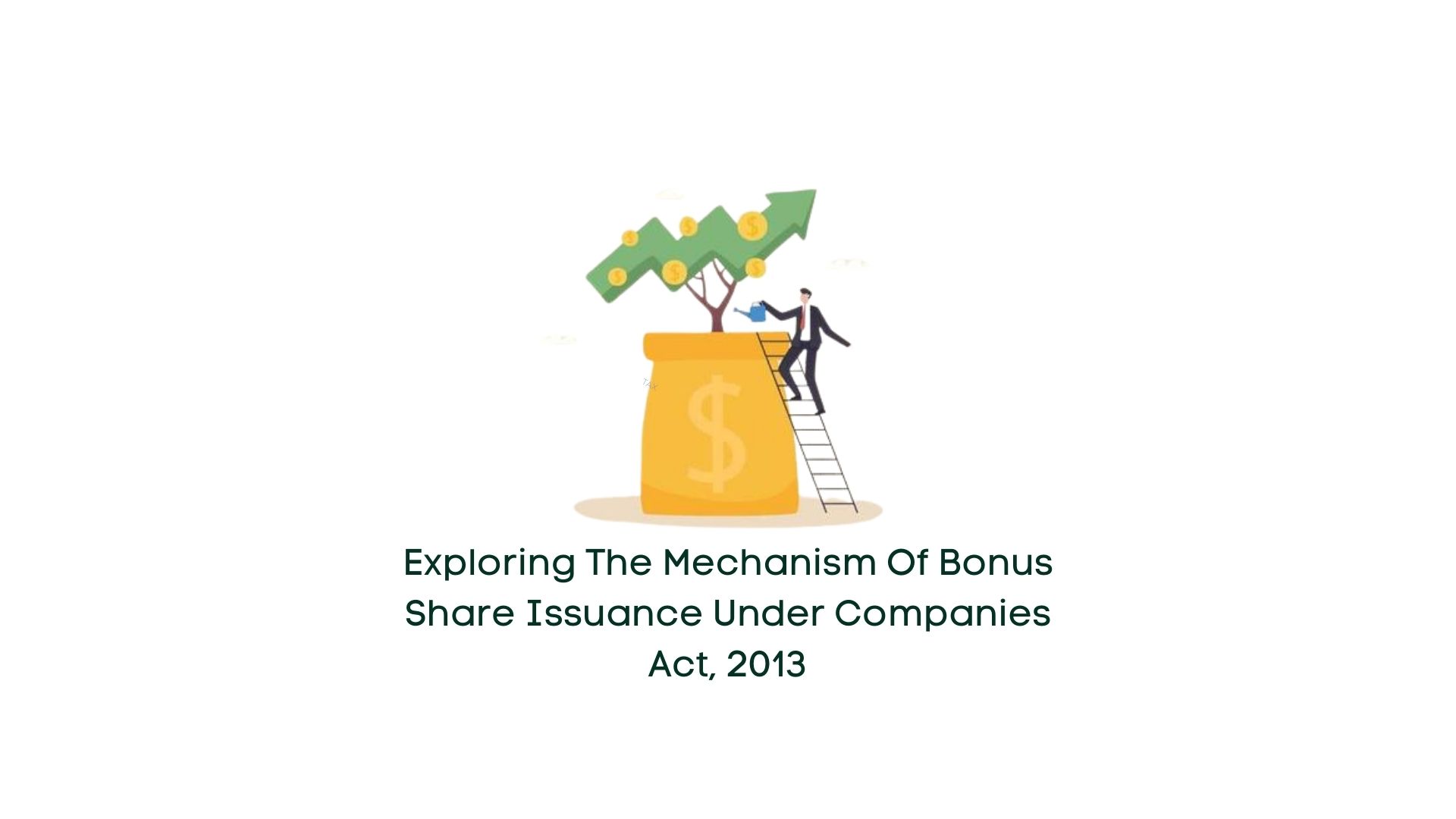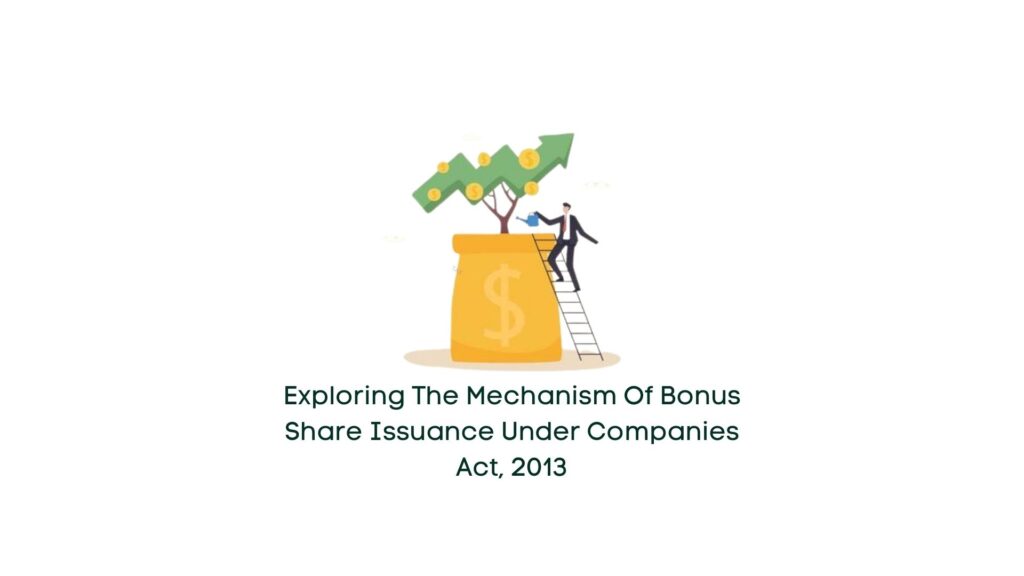
28 Feb Exploring the Mechanism of Bonus Share Issuance under Companies Act, 2013

Ever pondered upon how companies utilize their accumulated profits or respond when their share prices surge? Frequently, they opt to distribute bonus shares to existing shareholders based on their current shareholdings. These bonus shares are extra shares provided by a company to its current shareholders without any additional expense. They represent the company’s accumulated profits that are not distributed as dividends but rather converted into complimentary or bonus shares. For example, if a shareholder possesses 200 shares of a company that announces a bonus of 4:1, they would receive four bonus shares for each share they own, resulting in 800 additional shares at no cost. Consequently, their total shareholding would increase to 1000 shares. This discourse serves as a comprehensive guide to understanding the issuance of Bonus Shares.
Overview of Bonus Share Issuance
The issuance of bonus shares constitutes a corporate action undertaken by companies. These fully paid-up shares are provided by the company to its existing shareholders free of charge, utilizing a portion of the company’s retained earnings. Such shares are distributed in proportion to the shares already held by shareholders.
Rationale and Advantages
Shareholders anticipate a significant and consistent return on their investments, which companies can fulfill either by declaring dividends or by distributing bonus shares. When a company cannot distribute dividends to its shareholders despite generating profits, it resorts to issuing bonus shares to its existing shareholders, thereby augmenting the company’s equity base. This, in turn, decreases the share price, making it an appealing option for prospective investors. The issuance of bonus shares is also recognized as a gesture of long-term commitment to growth, enhancing investor confidence in the company’s prospects. Furthermore, bonus shares increase liquidity, help capitalize shares, and can replace dividends, enabling companies to retain cash for future endeavors.
Types and Sources of Bonus Shares
Bonus shares can be of two types, depending on their source and issuance process:
- Fully Paid Bonus Shares: These shares are distributed free of cost to shareholders in proportion to their existing holdings. They can be issued from various sources, including capital redemption reserves, security premiums, capital reserves, profit & loss accounts, general reserves, investment allowance reserves, and sinking funds for debenture redemption.
- Partly Paid Bonus Shares: When bonus shares are used to convert partly paid shares into fully paid shares, they are termed as partly paid-up bonus shares. They can be issued from sources such as capital reserves, profit & loss accounts, general reserves, investment allowance reserves, development rebate reserves, and sinking funds for debenture redemption.
Pre-Conditions for Bonus Share Issuance
Certain conditions must be met before issuing bonus shares, including authorization within the company’s articles of association, sufficiency of authorized capital, no defaults in statutory dues, and issuance only from free reserves, securities premium accounts, or capital redemption reserve accounts.
Procedure for Issuance of Bonus Shares
The issuance process involves convening a board meeting, recommending the issuance, determining the bonus share ratio, filing necessary forms, issuing notices for a general meeting, obtaining shareholder approval, conducting subsequent board meetings for allotment, and finally issuing share certificates.
Conclusion
In essence, bonus share issuance presents an opportunity for shareholders to enhance their wealth. These shares, provided free of charge to existing shareholders, reflect a company’s commitment to growth and can yield various benefits despite some associated drawbacks.


No Comments